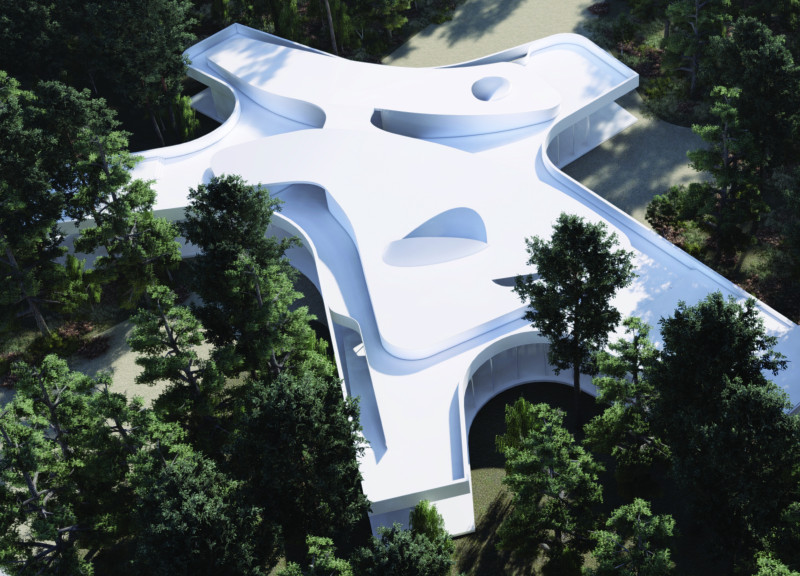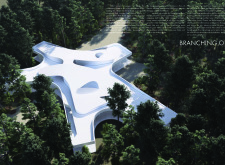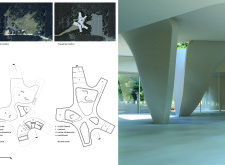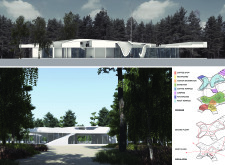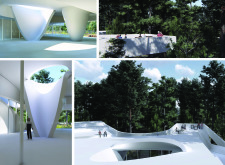5 key facts about this project
The pavilion design creates a connection between architecture and an existing forest landscape, enhancing visitor interaction with nature. Located just outside the Great Kemeri Bog, this structure functions as a Visitor Center, housing a coffee shop, visitor information center, exhibition hall, and restrooms. The design concept centers on offering a flexible space that encourages exploration while fostering appreciation for the natural surroundings.
Design Functionality
Organized into two distinct levels, the pavilion dedicates the ground level to essential visitor services. Its flowing, sinuous form allows for a natural progression between indoor and outdoor areas. Pathways lead from the structure toward the bogs and forest, enhancing accessibility and promoting movement. This spatial configuration supports a lively experience for guests while maintaining a connection with the environment.
Rooftop Experience
The upper level of the pavilion features outdoor spaces designed for activities such as camping and relaxation. This elevated area provides open platforms that allow visitors to observe the natural scenery from above. It not only extends the architectural space but also serves as a place for individuals to engage with the beauty of the forest, enriching their time spent in the area.
Material and Design Details
While specific materials are not mentioned in the presentation, the pavilion features a façade with large glass panels that facilitate floor-to-ceiling views, creating a strong link between the interior and the forest. This design choice invites natural light into the space, contributing to an open and welcoming atmosphere. Areas of the roof are designed to serve dual purposes, providing both structural support and light.
The design emphasizes the importance of relationships between the building and its natural surroundings. It encourages multiple levels of interaction with nature, allowing visitors to navigate through, under, and above the pavilion. Key features are created to maintain a continuous bond with the forest, offering perspectives that deepen the appreciation of local ecology. The overall experience is shaped by the deliberate integration of the structure into its environment, allowing nature to remain a focal point for visitors.


